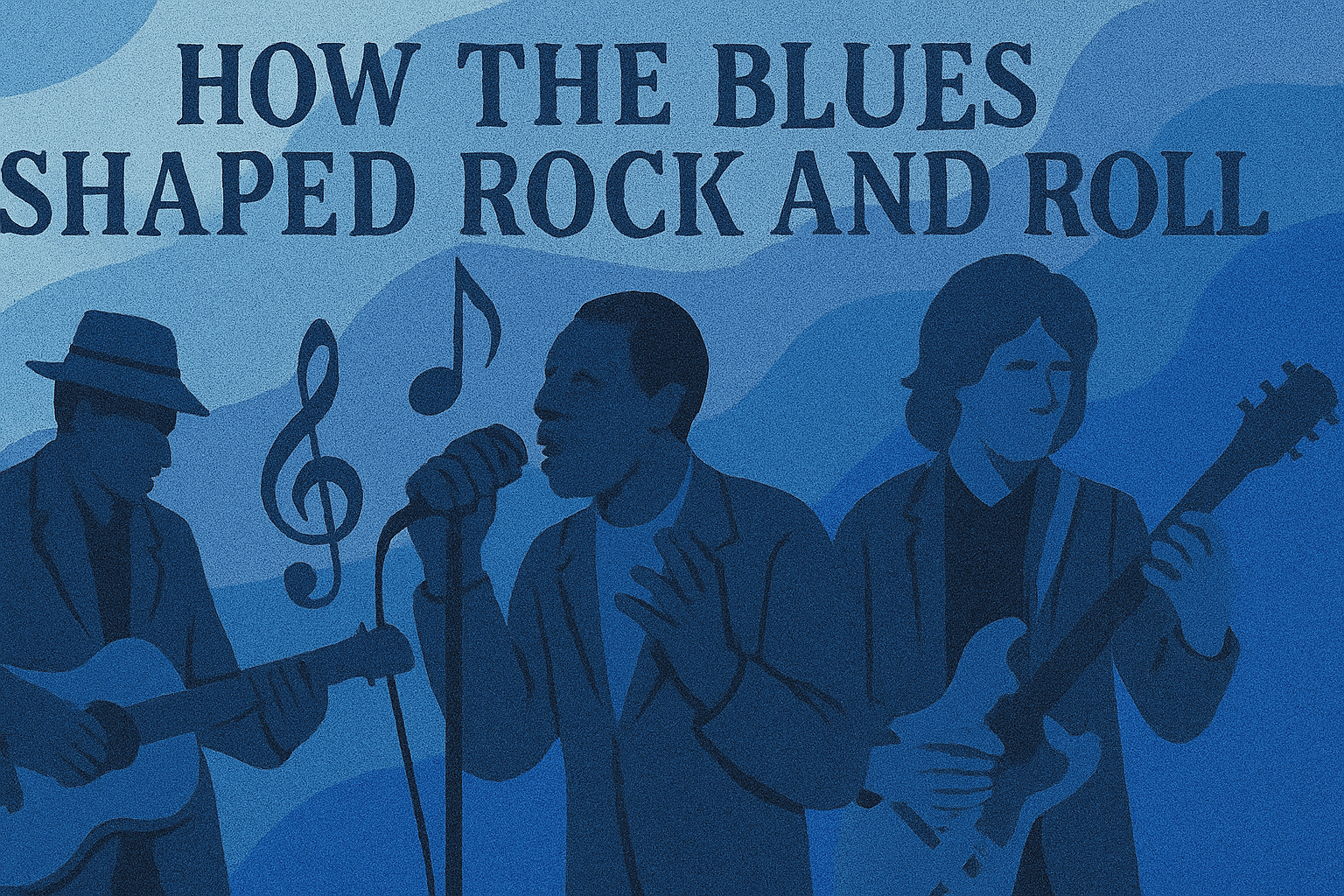Blues music shaped rock and roll at its very core — from structure and instrumentation to lyrical themes, performance style, and cultural impact. Without the blues, there would be no rock and roll. It served as the foundation upon which rock was built, particularly in mid-20th-century America and Britain.
Here’s a breakdown of how blues shaped rock and roll:
Musical Structure and Sound
- 12-bar blues progression: This classic chord structure (I–IV–V) is the backbone of countless early rock and roll songs.
- Example: “Johnny B. Goode” by Chuck Berry and “Hound Dog” by Elvis Presley use this format.
- Example: “Johnny B. Goode” by Chuck Berry and “Hound Dog” by Elvis Presley use this format.
- Blues scales and riffs: Rock guitarists borrowed “blue notes”, bent strings, and repetitive guitar riffs directly from blues.
- Example: The Rolling Stones based many hits on blues-style guitar licks.
- Example: The Rolling Stones based many hits on blues-style guitar licks.
Themes and Lyrics
- Blues music often dealt with love, heartache, rebellion, freedom, and struggle — topics that rock and roll inherited and amplified.
- Rock added a youthful twist, but the core message of personal expression and defiance remained intact.
Vocal Style and Attitude
- The expressive, raw, emotional vocal delivery of blues singers like Howlin’ Wolf and Muddy Waters shaped the sound of rock frontmen.
- Elvis Presley, Janis Joplin, and Mick Jagger all channeled this emotive intensity.
- Elvis Presley, Janis Joplin, and Mick Jagger all channeled this emotive intensity.
- The gritty, rebellious attitude of blues evolved into rock’s trademark swagger and edge.
Instrumentation and Rhythm
- Rock and roll adopted the blues format of:
- Electric guitar
- Bass
- Drums
- Piano
- Electric guitar
- The shuffle rhythm, heavy backbeat, and groove-based playing found in blues directly shaped the rhythmic drive of early rock and roll.
Cultural Roots and Crossovers
- Blues was born in African American communities of the Deep South and carried the spiritual, emotional, and cultural scars of slavery and segregation.
- As blues moved north (e.g., to Chicago), it evolved into urban electric blues, which deeply influenced white rock musicians in the U.S. and U.K.
- The British Invasion (The Beatles, Rolling Stones, Led Zeppelin) was heavily blues-inspired — many of their early songs were covers of American blues songs.
Key Figures Bridging Blues and Rock
| Artist | Contribution |
| Chuck Berry | Fused blues structure with electric guitar solos and teenage themes — the blueprint for rock guitarists. |
| Little Richard | Brought blues and gospel energy to explosive rock and roll performance. |
| Bo Diddley | Introduced rhythmic patterns (like the “Bo Diddley beat”) derived from African rhythms via blues. |
| Muddy Waters | His electric blues style directly inspired the sound of British rock bands. |
| Elvis Presley | Popularized rhythm & blues for white audiences; heavily influenced by Black blues musicians. |
To sum it all up:
Blues shaped rock and roll by providing:
- Its musical DNA (chord progressions, scales, rhythm)
- Its themes of rebellion, love, and personal struggle
- Its performance style — raw, emotional, and energetic
- Its cultural foundation rooted in the Black American experience
Rock and roll is not just influenced by the blues — it grew out of it, transforming a regional folk tradition into a global musical revolution.
